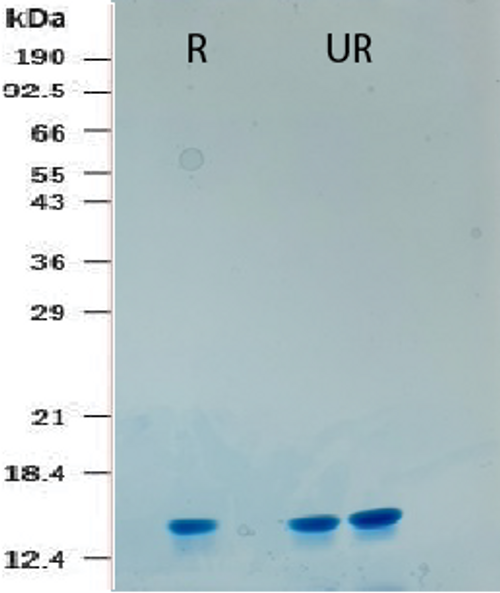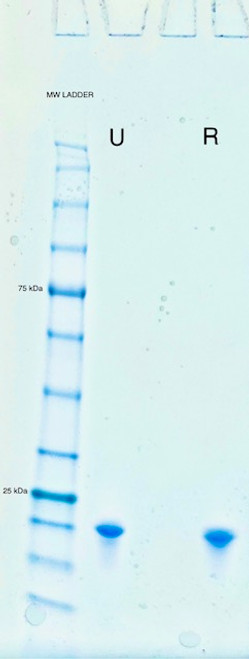IL-4, a multifaceted cytokine, plays a crucial role in governing various T and B cell activities such as cell proliferation, survival, and gene expression. It is synthesized by mast cells, T cells, and bone marrow stromal cells. IL-4 specifically directs the transformation of naive CD4+ T cells into helper Th2 cells, known for their cytokine-secretion profile that includes IL-4, IL-5, IL-6, IL-10, and IL-13, all conducive to a humoral immune response. Additionally, IL-4 is pivotal in regulating the shift of immunoglobulin classes towards IgG1 and IgE isotypes.
An important note is that excessive IL-4 production by Th2 cells can lead to heightened IgE production and allergic responses. The recombinant Human IL-4, a 15.1 kDa globular protein containing 130 amino acid residues, mirrors these regulatory functions in the immune system.
|
Product Specifications
|
|
| Species | Human |
| Published species |
Human, Mouse
|
| Expression System | E. coli |
| Amino acid sequence |
MHKCDITLQE IIKTLNSLTE QKTLCTELTV TDIFAASKNT TEKETFCRAA TVLRQFYSHH EKDTRCLGAT AQQFHRHKQL IRFLKRLDRN LWGLAGLNSC PVKEANQSTL ENFLERLKTI MREKYSKCSS
|
| Molecular weight | 15.1 kDa |
| Class | Recombinant |
| Type | Protein |
| Purity |
≥ 98% by SDS-PAGE gel and HPLC analyses.
|
| Endotoxin concentration | <0.1 EU/µg |
| Activity |
The ED50 was determined by the dose-dependent stimulation of the proliferation of human TF-1 cells is ≤ 0.2 ng/ml, corresponding to a specific activity of ≥ 5 x 10^6 units/mg.
|
| Conjugate | Unconjugated |
| Form | Lyophilized |
| Contains |
no preservative
|
| Storage conditions | -20°C |
CAUTION
For Research Use Only. Not for use in diagnostic procedures.





















